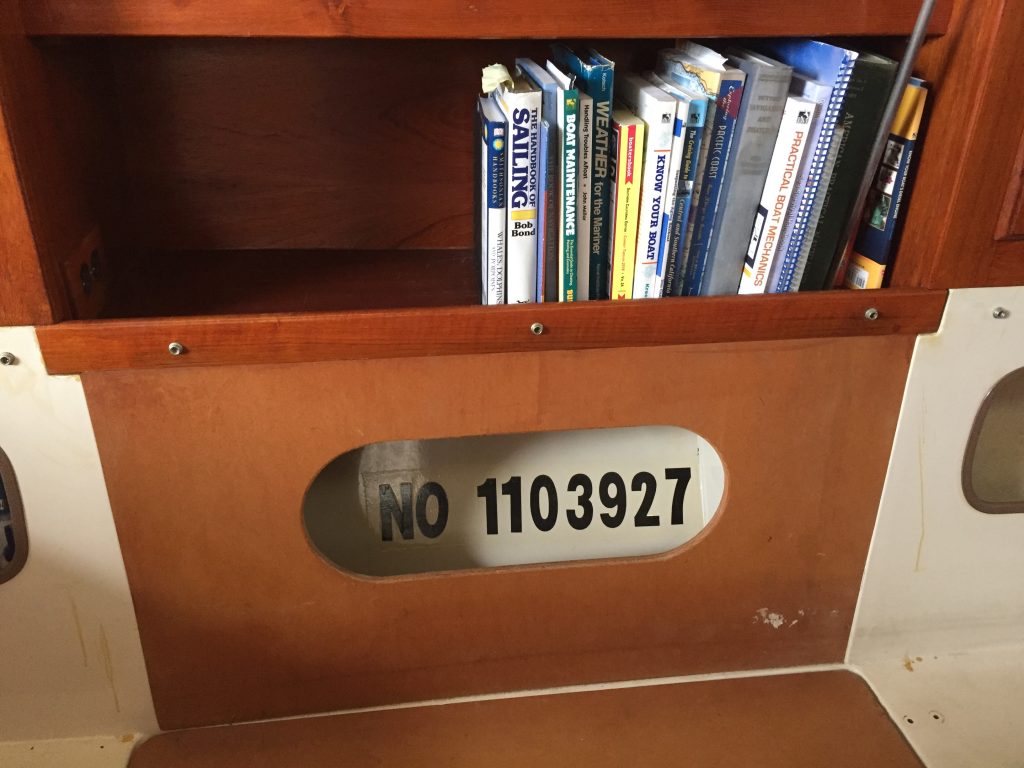When we got our boat, it was already documented with the USCG. Since we had already planned to document any boat we got, that saved us a step. We did have to register the change of ownership and the change to the boat name. As part of that process, I was able to find a partial history of the boat’s owners and names. We now know that she is on at least the 4th owner and 3rd name.
With it documented, we do not have to have the California “CA” number on the side. But there are other regulations pertaining to the marking of the boat.
Name and hailing port
Based on the USCG info in the FAQ below, we chose to put the new name and hailing port on the transom. We also put the name on the sides near the stern. We purchased our boat graphics from Boat US.
Documentation number
When a boat is documented, the “official number” you get from the USCG has to be permanently affixed to the boat someplace visible. I turns out that the previous owner(s) did not know that, so before we could pass an inspection, we had to mark the boat.
The USCG is not very clear about their definition of the term “visible” (see FAQs below). In most small sailboats, there is not a visible part of the hull structure that can be seen without opening the right compartment. I read a lot of different interpretations that ranged from hanging an engraved plaque to glassing the number into the bilge.
In the end, we decided to put the number on the inside of the hull, in the compartment behind the port settee. We used 3″ high, stick-on, vinyl letters from West Marine, and covered them with a layer of clear epoxy. I masked the edges with painter’s tape to make a nice clean border, and it turned out pretty well.

It is easy to unsnap the back cushion to see the number, and removing it would definitely cause noticeable damage to hull. So I think we meet the spirit of the regulations. During our USCG Auxiliary safety inspection, I showed them the number, and we passed, so I’ll take that as confirmation that we are OK.





